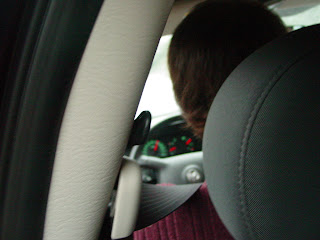Belongingness and Outgroup Derogation
 Our first week of readings for our prejudice and stereotypes seminar gave a historical background and overview of research in prejudice and stereotypes. We read some of Gordon Allport’s classic work on prejudice, as well as pieces from more contemporary authors. Essentially, the readings dealt with the definition of prejudice, the cognitive aspect of stereotypes, and the group dynamics of in-groups and out-groups. Lots of good ideas were presented, but there were a few that really grabbed my attention.
Our first week of readings for our prejudice and stereotypes seminar gave a historical background and overview of research in prejudice and stereotypes. We read some of Gordon Allport’s classic work on prejudice, as well as pieces from more contemporary authors. Essentially, the readings dealt with the definition of prejudice, the cognitive aspect of stereotypes, and the group dynamics of in-groups and out-groups. Lots of good ideas were presented, but there were a few that really grabbed my attention.
First, Princeton psychologist, Susan Fiske, presented a “core social motives” approach to understanding prejudice, which I found particularly interesting. According to Fiske, as well as other theorists (e.g., Baumeister & Leary, 1995), we need other people to survive. As connecting with others is so important for our survival, we are embedded with various cognitive mechanisms and/or motivations that promote sociality. As we’re motivated to fit in with others, some of these motivations are likely to relate to group prejudices. The two social motives that I’m interested in most (as they relate to my own research) are the need to belong and the need for self-enhancement/self-esteem.
Belongingness is one of the most fundamental of human needs. It would therefore make sense that people will do whatever they can to connect with their group, encompassing what Allport (Chapter 2) refers to as “love-prejudice,” while avoiding being the target of ostracism or social rejection. This, of course, may come at the expense of out-group members (i.e. expressing in-group bias and out-group stereotypes). At the same time, people need to feel good about themselves and the groups to which they belong. Essentially, people are going to compare their group to others in ways that make them appear more favorable. For instance, when people experience temporary threats to their self-esteem, they make more stereotypical/prejudicial judgments of outgroup members.
This makes sense to me, especially in terms of Sociometer Theory (ST: Leary et al., 1995). According to ST, self-esteem and belongingness are intimately linked, in that self-esteem acts as a monitor of our inclusion status. When we are threatened with social exclusion, we experience a decrement in self-esteem which signals to us that we should adjust our behavior to avoid exclusion. In light of ST, the finding that people who experience threats to their self-esteem become more prejudiced makes very much sense to me. It’s possible that the decrement in self-esteem alerts the individual of an ostensible belongingness threat. And one way to seek out connections is to show more conformity to one’s in-group (i.e., expressing the in-group’s prejudiced opinions), as other members of one’s in-group are more likely to resemble candidates for future social acceptance than outgroup members.
Another interesting idea came from psychologists, Charles Stangor and Mark Schaller, who extend the idea of individual self-esteem to collective self-esteem. In their chapter, they bring up some evidence that when high status groups experience temporary evaluative threats, they also become more prejudiced. Perhaps Sociometer Theory has implications for collective self-esteem as well? Again, the findings would appear to coincide with ST. Yet, one question that I have is: under what conditions will an out-group member become a reasonable candidate for social connection? Essentially, when will people ignore their prejudices in order to seek connection with out-group members? Do people seek such a connection in moments of desperation, such as after being ostracized from their own in-groups?
Oh well, just some thoughts. More on prejudice and stereotypes next time!
References and further reading:
Allport, G. W. (1954/1979). The Nature of Prejudice. Perseus Books.
Baumeister, R. F., & Leary, M. R. (1995). The need to belong: Desire for interpersonal attachments as a fundamental human motivation. Psychological Bulletin, 117, 497-529.
Dovidio, J. F., Glick, P., & Rudman, L. A. (Eds.) (2005). On the Nature of Prejudice: 50 Years After Allport. Malden, MA: Blackwell Publishing.
Leary, M. R., Tambor, E. S., Terdal, S. K., & Downs, D. L. (1995). Self-esteem as an interpersonal monitor: The sociometer hypothesis. Journal of Personality and Social Psychology, 68, 518-530.
Stangor, C., & Schaller, M. (2000). Stereotypes as individual and collective representations. Stereotypes and Prejudice: Essential Readings (pp. 64 - 82). New York, NY US: Psychology Press.



